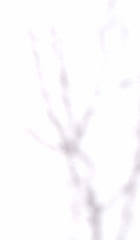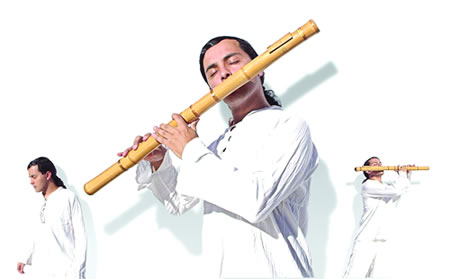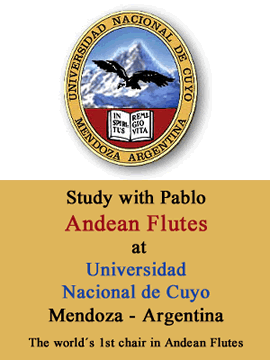
World Flutes Master

Take care of our enviroment

comprar

Peace web theme set courtesy of Crystal Cloud Graphics web set icon
Crystal Cloud Graphics
Crystal Cloud Graphics

Ney
The ney (also nai, nye, nay) is an end-blown flute that figures prominently in Persian and West Asian music. In some of these musical traditions, it is the only wind instrument used. It is a very ancient instrument, with depictions of ney players appearing in wall paintings in the Egyptian pyramids and actual neys being found in the excavations at Ur. This indicates that the ney has been played continuously for 4,500-5,000 years, making it one of the oldest musical instruments still in use. It is a forerunner of the modern flute.
The ney consists of a piece of hollow cane or reed (ney is an old Persian word for reed--the reed comes from Arundo donax plant--with five or six finger holes and one thumb hole.) Some modern neys may be made of metal tubing or PVC electrical conduit. Pitch differs, depending on the region and the finger arrangement. A highly skilled ney player can reach as many as three octaves, though it is more common to have several "helper" neys to cover different pitch ranges or to facilite playing technical passages in other maqamat. Note that, in Romanian, nai is also applied to a curved Pan flute.
The Arabic and Turkish ney has 7 holes (6 for the Iranian), one of which is on the back and usually closed with the thumb.
Related instruments: The Armenian "Duduk", Azerbaijani "balaban", and the Balcanian qernate (girnata) are instruments used in other parts of the Middle East
The ney (also nai, nye, nay) is an end-blown flute that figures prominently in Persian and West Asian music. In some of these musical traditions, it is the only wind instrument used. It is a very ancient instrument, with depictions of ney players appearing in wall paintings in the Egyptian pyramids and actual neys being found in the excavations at Ur. This indicates that the ney has been played continuously for 4,500-5,000 years, making it one of the oldest musical instruments still in use. It is a forerunner of the modern flute.
The ney consists of a piece of hollow cane or reed (ney is an old Persian word for reed--the reed comes from Arundo donax plant--with five or six finger holes and one thumb hole.) Some modern neys may be made of metal tubing or PVC electrical conduit. Pitch differs, depending on the region and the finger arrangement. A highly skilled ney player can reach as many as three octaves, though it is more common to have several "helper" neys to cover different pitch ranges or to facilite playing technical passages in other maqamat. Note that, in Romanian, nai is also applied to a curved Pan flute.
The Arabic and Turkish ney has 7 holes (6 for the Iranian), one of which is on the back and usually closed with the thumb.
Related instruments: The Armenian "Duduk", Azerbaijani "balaban", and the Balcanian qernate (girnata) are instruments used in other parts of the Middle East









